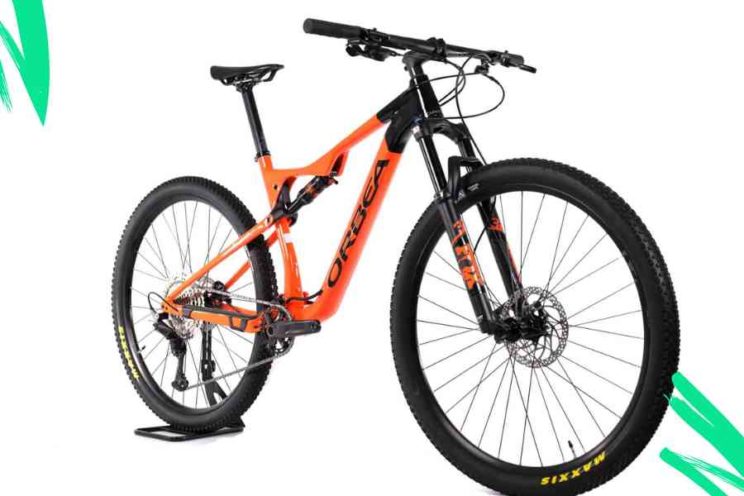Assembling 120 mm forks in pictures configured for 100 mm can be an acceptable option.But it is not the ideal solution. It is not about replacing a fork with 100 mm with a 120 mm. It is not something so simple. The challenge is to offer models that preserve all the characteristics and geometries of a pure XC, but with suspensions vitaminas. In 2021 there is an inflection point when some brands accept the challenge of producing Cross country models in series with the unique 120 mm option. Scott and Orbea They represent the bolder examples in this regard. The Swiss brand hit on the table with the launch of its competition model Spark, which arrived with a unique configuration of 120 mm travel in its two shock absorbers. The second to hit was Orbea, with the Oiz, which also went to offer a single 120 mm assembly, without adding a single gram to previous models mounted with 100 mm.
👉 Orbea Oiz. Do you want to find the model of Orbea Oiz What better fit your needs? Enter here and visit the reconditioned models with the Tuvalum label. [Captation Id = "Attachment_9467" Align = "Alignnone" Width = "744"]
 Orbea Oiz.[/caption]
Orbea Oiz.[/caption]
In part, this trend derives from the competition to the highest level, where brands base many of its developments. It is a reality that XC circuits are increasingly technical. Therefore, an extra 20 mm route provides some more traction, more confidence ... and speed. In the search for marginal gains, a plus of speed in complicated segments is not negligible. Tests such as the World Cup are a test bank that then nourishes the rest of the industry. It is possible that the trend extends in the coming years and becomes a standard for all market country models. Something similar happened, if you remember it, with the size of the tires: when nobody thought of a better solution than the 26 ’, the wheels of 27.5’ and 29 ’were imposing their law. Many XC bicycles, especially those most focused on the competition, have been considered much more capable of speed and climbing, penalizing something in the descents. The 120 mm of travel allow, in a way, to mitigate this issue to obtain total bicycles. In short: With 120 mm you will go down better and maintain all the virtues of a model designed to fly on the ground. But remember: we always talk about XC models with an exclusive geometry for assembly with this extra fork journey. Another important issue is weight. Specific XC models with 120 mm do not have to penalize. On the contrary. Light forks such as Fox 34 Step -cast and Rockshox Sid Ultimate They offer this extra route with an outstanding and lighter rigidity than the suspensions of 100 mm a few years ago.
Conclusion: What route is the most suitable for you?
Seen the general panorama, it is time to ask yourself: What should be the most to ride my Cross Country bicycle? Amo 100 mm or do I try 120 mm? In the XC models that we have seen, there is no double option: the 120 mm are already the standard. However, it is true that there are still brands, such as BMC, They have not taken the final step, offering the option of both 100 mm and 120 mm. Others, like Canyon, They resist proposing a configuration that is not the traditional 100 mm. As always, it depends on your tours and your way of understanding the MTB. By definition, a 100 mm route is made with a specific purpose: go fast; Obtain a contained damping that prevents floating over the ground, with the corresponding power waste.A 100 mm route is made with a specific purpose: go fast.Unless yours is the pure and hard competition, it is almost certain that with 120 mm you enjoy more about the bicycle. The models with this tour are more comfortable and allow to play more in more rugged land. On the other hand, they are somewhat less efficient when pedaling and adding weight on the scale. What will happen then with the 100 mm route applied to the XC modality? Are you sentenced to disappear? It's hard to know. Who knows if it will be limited to the lighter and smaller cyclists. We will see it. Seen the panorama, do not be afraid for your bike to stay outdated in the short term. The changes are progressive and you will have time to adapt to new market trends.














